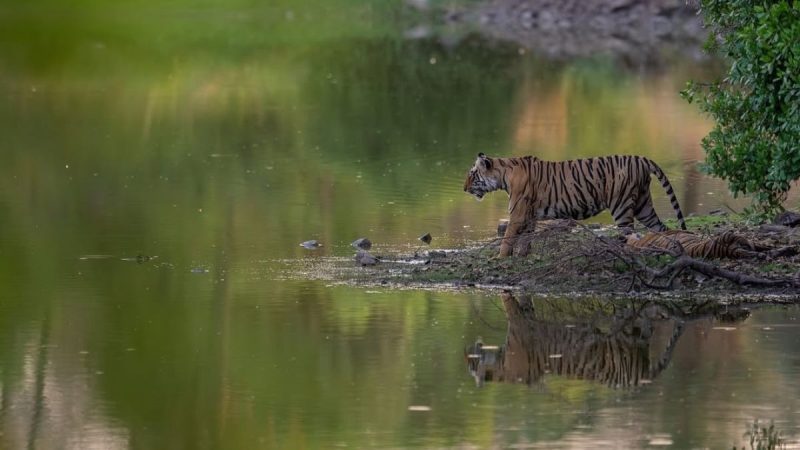Ranthambore doesn’t unfold like a typical wildlife park; it feels like stepping into a legend that refuses to end. Every trail here carries the weight of history, where crumbling forts rise above the forest and tigers move like shadows through the ruins. It’s a place where wilderness and heritage come together, creating an experience that is timeless. So, discover the magic of Ranthambore and plan your adventure with the best time to visit Ranthambore.
Best Time To Visit Ranthambore National Park
The forest stretches out in dusty browns and pale greens across Sawai Madhopur’s rocky hills, broken only by glimmering lakes where crocodiles bask in the sun like relics of another age. At the centre of it all, looming on a cliff, sits Ranthambore Fort, as a looming and lingering piece of heritage.
And tigers are why most travellers come. Unlike many Indian jungles where they slip into shadows, here they have a habit of showing themselves. They can be seen padding along tracks, stretched out by a waterhole, or even hunting in daylight, if you’re lucky.
But Ranthambore isn’t only about stripes and roars. Leopards, sloth bears, hyenas, chital and sambar deer, marsh crocodiles, it’s a roster that feels endless. Above the treetops, demoiselle cranes sweep in during winter, storks nest by the lakes, and raptors wheel in circles until the sun dips low.
It’s a place where history, myth, and wild instinct jostle together.
Choose Your Season: Ranthambore National Park
The park only opens between October and June. Miss that window, and the monsoon shuts the doors tight. But within those months, the forest changes character. October through March is, for most people, the sweet spot. The air bites in the morning, safaris feel crisp rather than exhausting, and you can ride for hours without sweating into your shirt.
Temperatures hover between 10°C and 30°C, which are pleasant enough to climb up to the fort for sweeping jungle views, or to linger at lakesides waiting for a herd of deer to drink. Birdwatchers call this their season: migratory guests flood in, turning the sky noisy and the trees colourful. Evenings are made for gathering around crackling bonfires at lodges, swapping stories of near misses and lucky sightings, sometimes with the chill still clinging to your hair.
By late March, the park starts to test you. Heat builds until May and June, when stepping into the afternoon sun feels like opening an oven door. But here’s the trade-off: the hotter it gets, the better your chances of finding the tiger.
As waterholes dry up, every living creature gravitates toward the few that remain. Sit long enough, and you might watch a striped cat descend for a drink, stretch lazily into the shallows, or fix its eyes on prey across the clearing. Photographers swear by this season, as the light is honey-gold, the drama is raw, and the crowds are thinner. There’s a harsh beauty to Ranthambore in summer; you work for it, but it gives back.
Also Read: Travelling To Ranthambore? 7 Animals You Can Sight At This National Park In Rajasthan
So, winter hands you comfort, birdsong, and long hours of exploring without breaking a sweat. Summer strips the comfort away but rewards you with closeness, sometimes uncomfortably close, to the park’s fiercest resident. Both are Ranthambore’s different moods, and you can choose your pick accordingly.
Cover Image Courtesy: ranthamborenationalpark/Instagram
For more such snackable content, interesting discoveries and the latest updates on food, travel and experiences in your city, download the Curly Tales App. Download HERE.

